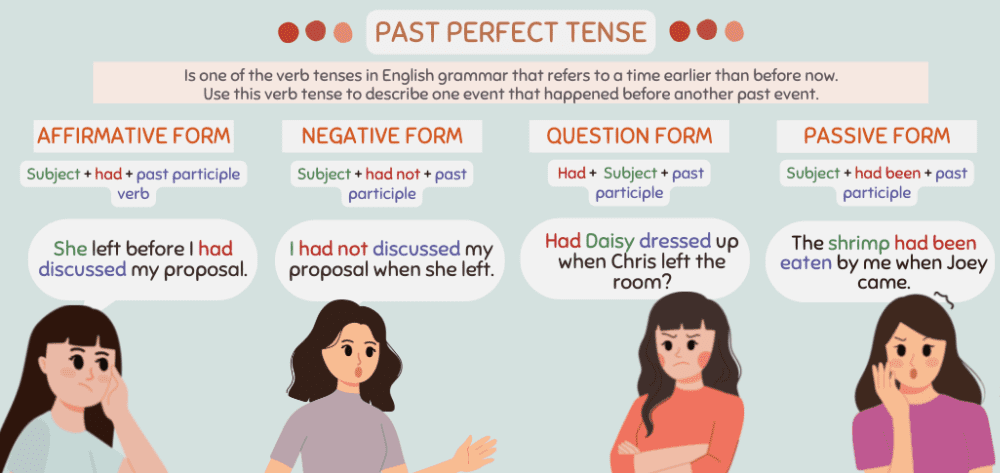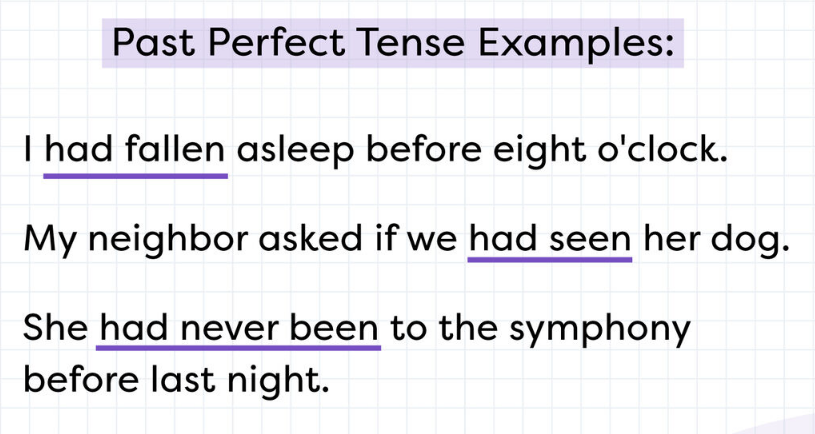Mastering Precision: The Past Perfect Tense Demystified for IELTS Success
In the intricate mosaic of English grammar, the past perfect tense stands as a subtle yet powerful element that adds depth and precision to our ability to narrate events and actions in the past. In the realm of language proficiency tests, such as the IELTS (International English Language Testing System), understanding and using the past perfect tense skillfully can significantly impact one’s performance.
This article embarks on an exploration of the past perfect tense, unraveling its definition, structure, usage, and its pivotal role in the IELTS test. Through a comprehensive examination of this grammatical construct, we will gain insight into how mastering it can elevate language proficiency and success in the IELTS examination.

1. What is past perfect tense?
The past perfect tense, often referred to as the pluperfect tense, is a grammatical construction used to describe actions, events, or states that were completed or had occurred before another point in the past. It allows us to convey the sequence of events in the past with clarity and precision. The past perfect tense is formed by using the auxiliary verb “had” followed by the past participle of the main verb.
For example: “She had finished her work before the meeting.”
2. How is the past perfect tense formed?
The structure of the past perfect tense follows a straightforward pattern:
2.1. Affirmative Form
Subject + had + past participle of the verb
2.2. Negative Form
Subject + had not (hadn’t) + past participle of the verb
2.3.Interrogative Form
Had + subject + past participle of the verb?
>> Suggested article: past perfect tense
3. What is the usage of past perfect tense?
The past perfect tense is employed for several specific purposes in English:
Expressing Actions Before a Point in the Past: It is used to describe an action or event that happened before another event in the past. For instance, “He had already left when I arrived.”
Narrating Past Sequences: It helps establish a clear sequence of events in a narrative or storytelling context. “She had prepared breakfast, finished her coffee, and then left for work.”
Reporting in Reported Speech: When reporting statements or questions in indirect or reported speech, the past perfect tense is often used to shift the reported action further into the past. For example, “She said that she had seen the movie.”

4. What is the role of past perfect tense in the IELTS test?
The past perfect tense plays a significant role in various sections of the IELTS test, let’s see how it contributes to the grammar for IELTS:
Listening Section: In the listening component, candidates may encounter conversations, interviews, or narratives that use the past perfect tense. Understanding this tense is essential for comprehending the timeline of events and accurately answering questions based on the audio materials.
Reading Section: The reading passages in the IELTS test might include sentences or paragraphs in the past perfect tense. Recognizing and understanding this tense is crucial for answering questions correctly and comprehending the context of the passages.
Speaking Section: In the IELTS Speaking test, candidates can showcase their language skills by using the past perfect tense to discuss past experiences, narrate stories, or describe events that occurred before a specific point in the past.
Writing Section: In both the Academic and General Training modules of the IELTS Writing test, candidates may need to use the past perfect tense to describe past events, especially when discussing historical data, trends, or sequences of actions.
5. Sample exercises of past perfect tense in the IELTS test
Let’s delve into some exercises to illustrate the use of the past perfect tense in the context of the IELTS test:
Exercise 1: Fill in the blanks with the correct form of the verb in the past perfect tense.
By the time I arrived at the airport, the plane __________ (already / take) off.
They were tired because they __________ (walk) for hours before they found a hotel.
When the teacher entered the classroom, the students __________ (finish) their assignments.
He couldn’t get into the house because he __________ (forget) his keys at the office.
The company had faced financial difficulties for months before they __________ (declare) bankruptcy.
Exercise 2: Rewrite the following sentences, changing them to the past perfect tense.
She told me about her trip to Europe.
They completed the project on time.
He wrote the report before the deadline.
We realized we were lost.
The movie started before we arrived at the theater.
Answers:
Exercise 1:
By the time I arrived at the airport, the plane had already taken off.
They were tired because they had walked for hours before they found a hotel.
When the teacher entered the classroom, the students had finished their assignments.
He couldn’t get into the house because he had forgotten his keys at the office.
The company had faced financial difficulties for months before they declared bankruptcy.
Exercise 2:
She had told me about her trip to Europe.
They had completed the project on time.
He had written the report before the deadline.
We had realized we were lost.
The movie had started before we arrived at the theater.
The past perfect tense, a powerful tool within the realm of English grammar, adds a layer of intricacy to our narratives by seamlessly expressing events that occurred before specific moments in the past. Its precise formation using ‘had’ and the past participle offers a structured approach to convey sequences of actions. Understanding the past perfect tense is not only a linguistic asset but a vital skill for anyone navigating the complexities of the English language, especially for those aiming to excel in language proficiency tests like the IELTS.

In the context of the IELTS test, the past perfect tense holds a strategic role across its diverse sections. In the listening and reading modules, recognition and comprehension of this tense are essential for the accurate interpretation of passages and audio materials. Effectively utilizing the past perfect tense in speaking showcases a candidate’s linguistic prowess, allowing them to articulate past experiences and narratives with sophistication. Moreover, in the writing component, deploying this tense appropriately is fundamental, particularly when discussing historical trends or presenting a chronological account of events.
Mastery of the past perfect tense offers a gateway to constructing narratives that possess clarity, coherence, and a nuanced sense of time. It is an indispensable tool for individuals striving to achieve higher language proficiency levels and, consequently, success in their academic and professional pursuits, including conquering the IELTS examination. Let’s start doing our IELTS practice test now!